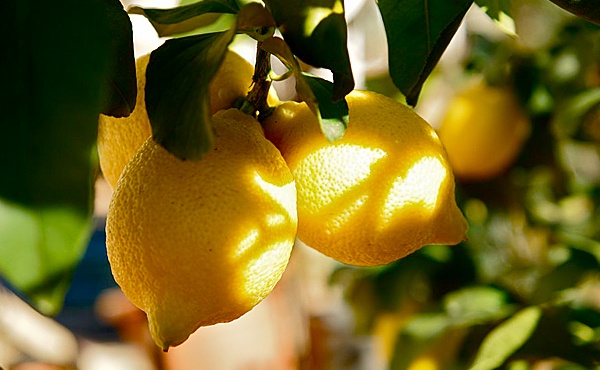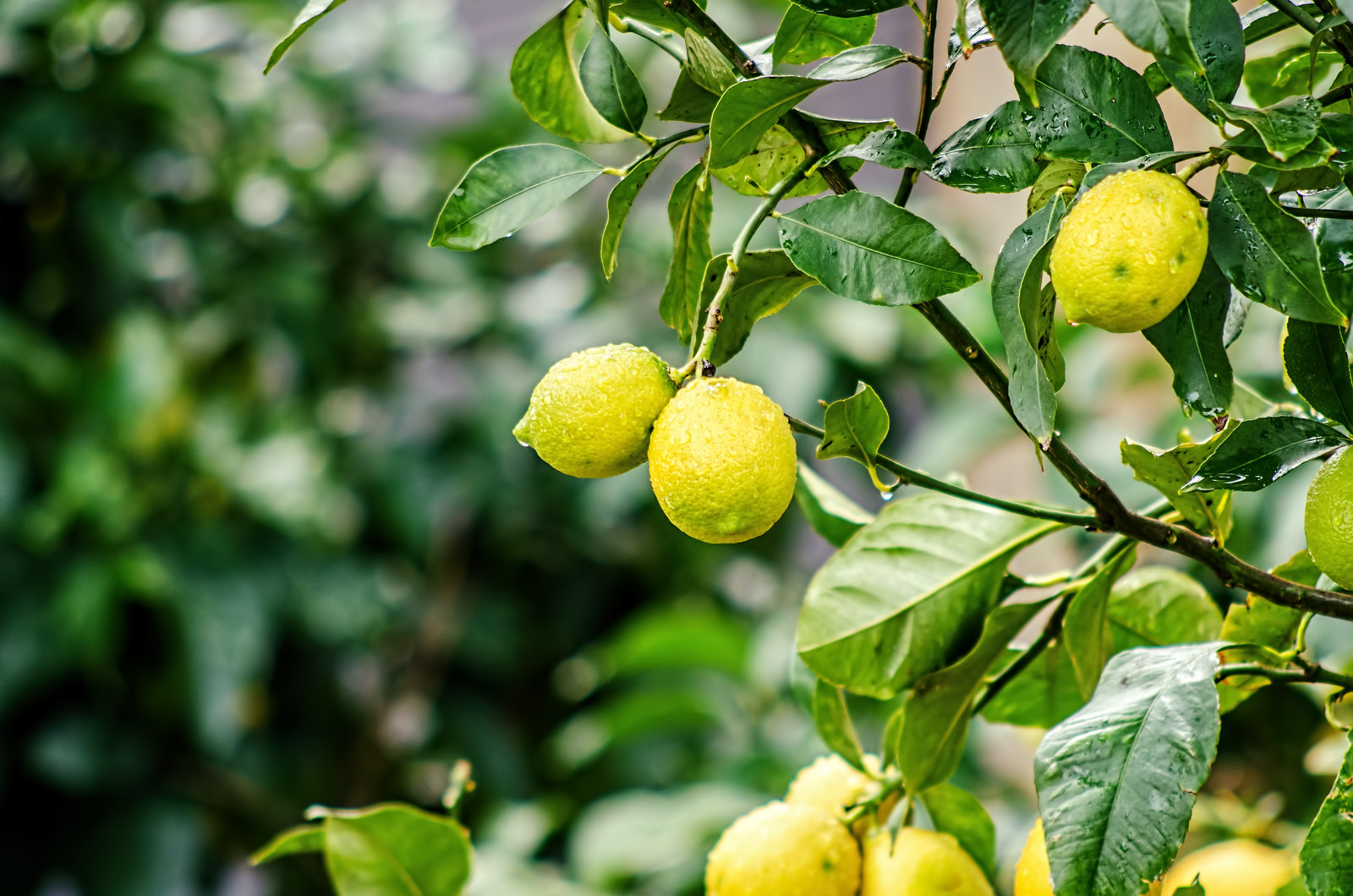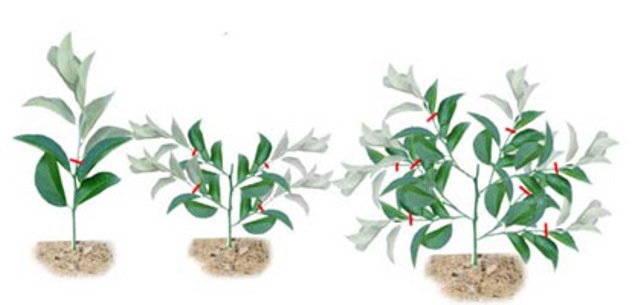Cutting the lemon correctly
Recently, more and more often you can find indoor lemon in houses. It is not a very tall tree that grows quite normally in a regular flower pot. But in order for it to be beautiful and bear fruit well, it must be cut off. This article focuses on how to prune your lemon correctly.
Content
When to trim
There is a statement that pruning a young lemon that was grown from a shortened cuttings or seedlings is necessary before the start of the active vegetation stage already at the age of one year. This is usually done in February. In this case, the house tree should reach a height of 20 cm.

At the same time, there is a slightly different approach to lemon pruning. In this situation, it is carried out in the spring, most often in March, and always before the start of the first growth. Usually in the spring, lemon pruning is carried out during the flowering and budding period.
You can also find information that homemade lemon is pruned in winter. In this case, pruning is carried out after all the fruits have been removed. This pruning can also be done in the fall. In this case, the autumn-winter pruning of indoor lemon can replace the spring. This will help increase the fruitfulness of your homemade lemon.
It is believed that the best time to prune a lemon tree is still spring.
It should be remembered that you should only prune indoor young lemons when necessary, as frequent and unnecessary pruning can only weaken it.
If you have an old homemade lemon tree, you can prune it for rejuvenation. In this case, the weakened branches are cut to the maximum available distance in order to stimulate the growth of new young shoots.

With proper pruning, as well as timely and high-quality care, the lemon tree will bear fruit for a long time, and its life expectancy will increase significantly.
In the absence of timely and necessary pruning, the lemon will grow with one trunk with no side branches, or with an ordinary dense bush.
Instructions
Since lemon is cut mainly in order to form a crown, they do it according to certain instructions and rules in order to achieve the desired result. An indoor lemon tree should have the required number of skeletal main branches, overgrown shoots and a large number of small fruit branches.
Lighting is very important for a lemon, so it is necessary to prune the plant so that its leaves can receive the maximum amount of sunlight.
For the formation and correct pruning of the crown, there are the following rules:
- you should start pruning a young tree only after it has grown to a height of at least 20 cm;
- for trimming, the stem should be 10-15 cm in height, and in cases of a cuttings plant, you can do without it at all;
- you should take into account the needs of lemon in nutrients, light and other biological characteristics. Otherwise, cutting the crown will only allow you to get an ornamental tree that will not bear fruit.

Lemon pruning scheme
Also, this process will be shown more clearly in the video posted in the article below.
Branching features and its effect on pruning
Also, in order to properly cut a lemon, you need to know the features of its branching, which are as follows:
- seedlings or lemon eyepiece at the beginning of growth form only one single vertical shoot, which is referred to the first order;
- in the second year (or at the end of the first year), lateral shoots are formed, which are also referred to as the first order. They must be left in the amount of 4 pieces;
- in the future, on the lateral shoots of the first order, the formation of shoots of the second order will occur, and so on;
- after the formation of lateral shoots of the fourth order, the onset of the first fruiting is possible.
An adult and already fruiting lemon tree has several branches that begin to bear fruit already in the first year, while others continue to grow and begin to bear fruit only after a year. It is also possible to form new shoots with only one apical flower. Sometimes the so-called vertically growing "fatty" and non-fruiting branches are formed. In such a situation, there are two possible ways to get rid of such unwanted "fatty" shoots:
- complete removal;
- shortening by 25 cm and their transformation into normal fruit branches.
The richest in useful ovaries are only fruit branches, which are usually located in the upper part of the crown. They are often placed horizontally, but they can also be in a hanging position.
During the growth and development of the lemon, as well as with proper care, the old branches gradually die off. In order for them not to pull on nutrients and minerals, they need to be cut off. In this case, pruning is designed only so that the nutrients are correctly distributed and go only to young and healthy branches, as well as fruits.
Taking into account the peculiarities of the branching of this indoor plant, the following instruction was developed:
- it is necessary to start pruning with a zero-order shoot. It is cut at a height of about 15 or 20 cm. In this case, four well-developed buds must be left;
- from these buds, the main skeletal shoots will form in the future. They should be directed evenly and in different directions;
- in the future, they should be plucked or pinched at the moment when these branches have reached a length of about 30 cm (sometimes 20 cm is enough);
- pluck out only excess shoots at the time of their appearance;
- if the shoots are useful and needed, then they are pinched when the first 5 or 7 leaves are formed. Only the tops are pinched;
- it is necessary to cut off second-order shoots to a length of up to 25 cm;
- subsequent shoots are usually shortened by 5 cm shorter than the previous ones;
- the formation and pruning of the crown skeleton is completed on the fourth-order shoots.
The nuances of crown formation
In addition to the instructions, there are also certain rules for pruning and crown formation in citrus plants. By following these rules, you can greatly simplify pruning in the future and significantly increase yields.
Rules for pruning and forming a crown:
- pruning and pinching can be carried out throughout the growing season;
- you can shorten all branches, but you should start from the trunk. This will help make the plant take the shape of a bush, as a result of which the formation of fruits will be faster;
- the trunk can be shortened only by no more than 20 cm. In this case, it is best to leave only a couple of well-developed buds, which are directed in different directions;
- shoots of the first order are not recommended to be shortened by more than 25 cm, and shoots of the second - by more than 10 cm;
- branches of subsequent orders (3, 4, 5) can be shortened only by 5 cm;
- crown formation can be completed by pruning the branches of the fourth or fifth order.

During the entire process of crown formation (it takes from two to three years), care should be taken to simultaneously sprout several upper buds at the same time. If this is not possible, this one extra shoot must be completely removed, but the branch itself must not be cut off. It is necessary to remove the shoot when it has already begun to grow.
Forming and pruning a flat crown is more beneficial for the lemon tree, since it allows it to be most optimally placed on the windowsill.
For such a crown, there is the following instruction for its formation:
- at the very beginning, you need to bend, cut and guide the branches that grow deeper into the room and orient them in the direction of the window sill;
- at the moment when the width, as well as the height of the crown of the plant, reaches the boundaries of the window slot, apply a hard pinch or pruning.
As a result, a living "curtain" is formed, and the tree itself begins to bear fruit more actively.
Video "Pruning Homemade Lemon Tree"
In this video, you can see how to properly trim without damaging the tree.
Tips for beginners
For amateur lemonologists, there are tips that will help to optimally and efficiently trim, and will also help to avoid many mistakes.
For beginners to maintain a homemade lemon tree, experts give the following tips:
- during the formation and pruning of the crown, the yield should be normalized by removing the flowers. Excess flowers only drain the tree. After several abundant fruitful years, the plant may dry out;
- anti-aging pruning should be carried out with a decrease in annual growth. It is carried out only in conjunction with feeding;
- instead of pruning, it is better to pinch, since it does not drain the lemon's capabilities so much;
- carefully monitor the formation of "fatty" branches and promptly suppress their development;
- it is best not to allow the plant to bear fruit during the crown formation period, since then the yield will be much higher than if the tree bears fruit during this period. Flowering is especially dangerous in the first year, since it can significantly deplete the lemon, and in the future it will give a low and low-quality yield. The complete death of the lemon is even possible;
- it is best to form a flat crown near a tree;
- pruning should be done only as a last resort and where it is really needed. With its help, you can improve the branching and form a regular and beautiful crown;
- short pruning is carried out if it is necessary to form strong new shoots, and long pruning is carried out if it is necessary to form fruit buds.
With proper pruning, you can form a beautiful crown, as well as improve the yield of the tree, and you will always have fresh lemons for your tea!
